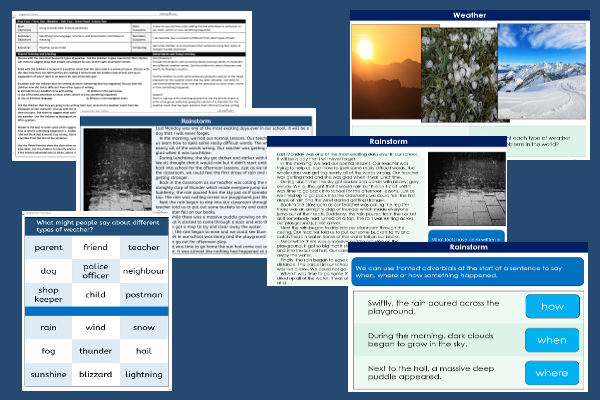Lesson Two – Weather Opinions

This English teaching pack for Key Stage Two gets the children to select and use fronted adverbials to suggest what someone might have said to describe when, where or how things happened in the weather.
The class can compose a selection of sentences from the viewpoints of characters to describe different types of weather and their impact on people and places.
Download this teaching pack including a lesson plan, classroom activities and an interactive presentation to select and use fronted adverbials to suggest what someone might have said to describe when, where or how things happened in the weather
Activities in this teaching pack include a shared reading text to identify and describe how to structure and format a recount of a severe weather event and a worksheet to compose sentences to show what different people might have said to describe when, where or how things happened in the weather.
The interactive presentation gets the children to explore how to use fronted adverbials to suggest what someone might have said to describe when, where or how things happened in the weather.
This lesson is part of an English scheme of work to get the children to compose and edit an informal recount about a significant weather event that could happen at the school. There are teaching activities for shared learning, differentiated worksheets to support independent learning and interactive presentations to introduce concepts and key skills.
-

Rounding Hundreds
Explain and model how to round some different numbers to the nearest hundred based on the place values of the digits in each number
-

Rounding Tens
Identify and record how to round some different numbers to the nearest ten based on the place values of the digits in each number
-

Classic Animal Stories
Investigate the structure and content of classic works of fiction by significant authors with animals as the main characters
-

Cities, Towns and Villages
Research and present the history of a range of different buildings and people that are part of the local community using a school exhibition
